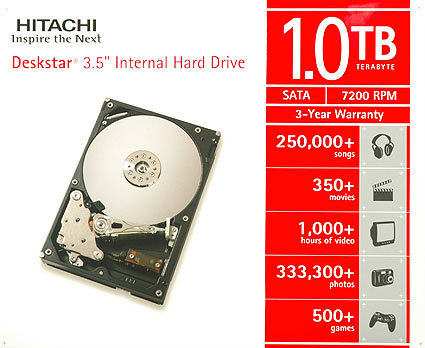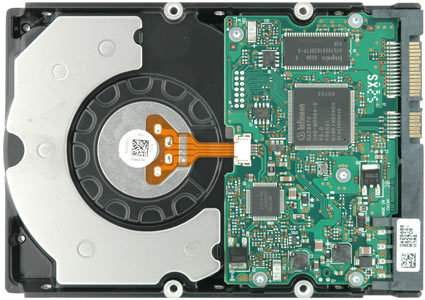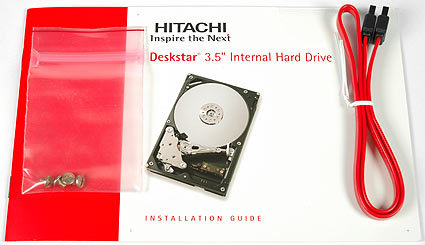Hitachi's 7K1000 Terabyte Hard Drive
Deskstar 7K1000
As already mentioned, the Deskstar 7K1000 uses five platters to reach its total capacity of 1,000 GB (1 TB); there also is a 750 GB version, which uses four platters. A higher platter count can be seen as a conservative approach, because it doesn't require maximum data densities, and hence offers more mechanical tolerance. We found the drive temperature to be a disadvantage resulting from the increased number of moving parts. The 127°F we measured still is a pretty high result, so we recommend active cooling of your Deskstar 7K1000 drive.
Both models are equipped with a Serial ATA interface with 300 MB/s bandwidth and Native Command Queuing (NCQ). The latter feature has to be supported by the hard drive and the storage controller (driver and hardware). It allows the drive to queue up and reorder incoming system commands, so they can be processed in a more efficient order. This means that the drive will try to answer all read or write requests with a minimum of head movements.
The Deskstar 7K1000 family comes with a nice built-in power saving feature, which puts the drive into one of three different power-saving modes when it is idle. The first is the so-called Active mode, which turns off the servo; this is the first mode the drive enters when it is idle. Typically, Hitachi parks the heads on the outside of the drive, which the 7K1000 can utilizes to go into Unload mode, where it parks the heads. The third mode is called low-power; it also reduces spindle speed to save energy.
Hitachi claims that it has reached a two-fold increase in the precision and sensitivity of the read process. The 7K1000 uses an iridium-manganese-chromium alloy, which is more resistant to extreme conditions such as temperature variance, humidity and even shocks. The Deskstar 7K1000 also comes with a doubled cache memory of 32 MB, which may be a result of increased memory densities rather than technical requirements. When we last analyzed hard drive parameters we could not measure any noticeable impact of 16 MB drive cache when compared to 8 MB.
An access time of 13.8 ms is an average result, as is the interface bandwidth of 184 MB/s. The 7K1000 is not the fastest 7,200 RPM hard drive ever, because Samsung's SpinPoint P166 delivers a higher maximum data transfer rate (86.6 vs. 84.9 MB/s). However, the average transfer rate of 68.5 MB/s is at the top of the list.
Get Tom's Hardware's best news and in-depth reviews, straight to your inbox.

Patrick Schmid was the editor-in-chief for Tom's Hardware from 2005 to 2006. He wrote numerous articles on a wide range of hardware topics, including storage, CPUs, and system builds.
-
JMG_22 Purchased a new Hitachi 1 TB hard drive, but can't get Windows XP loaded without getting blue error screen? Can I use Windows restore/recovery disks with a new hard drive to install operating system.Reply
(old hard drive failed)



